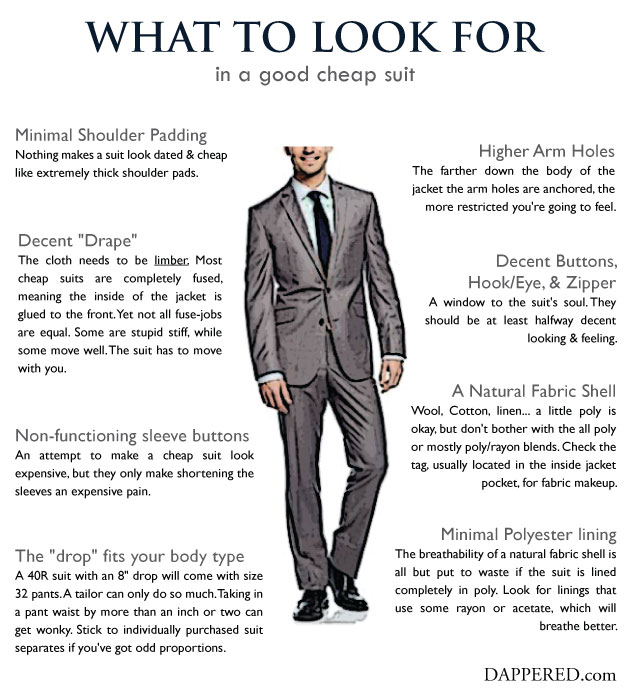Some would claim that there is no such thing as a good, inexpensive suit. But then there are those of us who don’t want to (or can’t) spend a ton of money on a suit we wouldn’t wear with any real frequency. There are great looking, good feeling suits in the $125 – $300 range. They just might be a little tough to find. Here’s what to look for, and remember, dry clean as little as possible…

